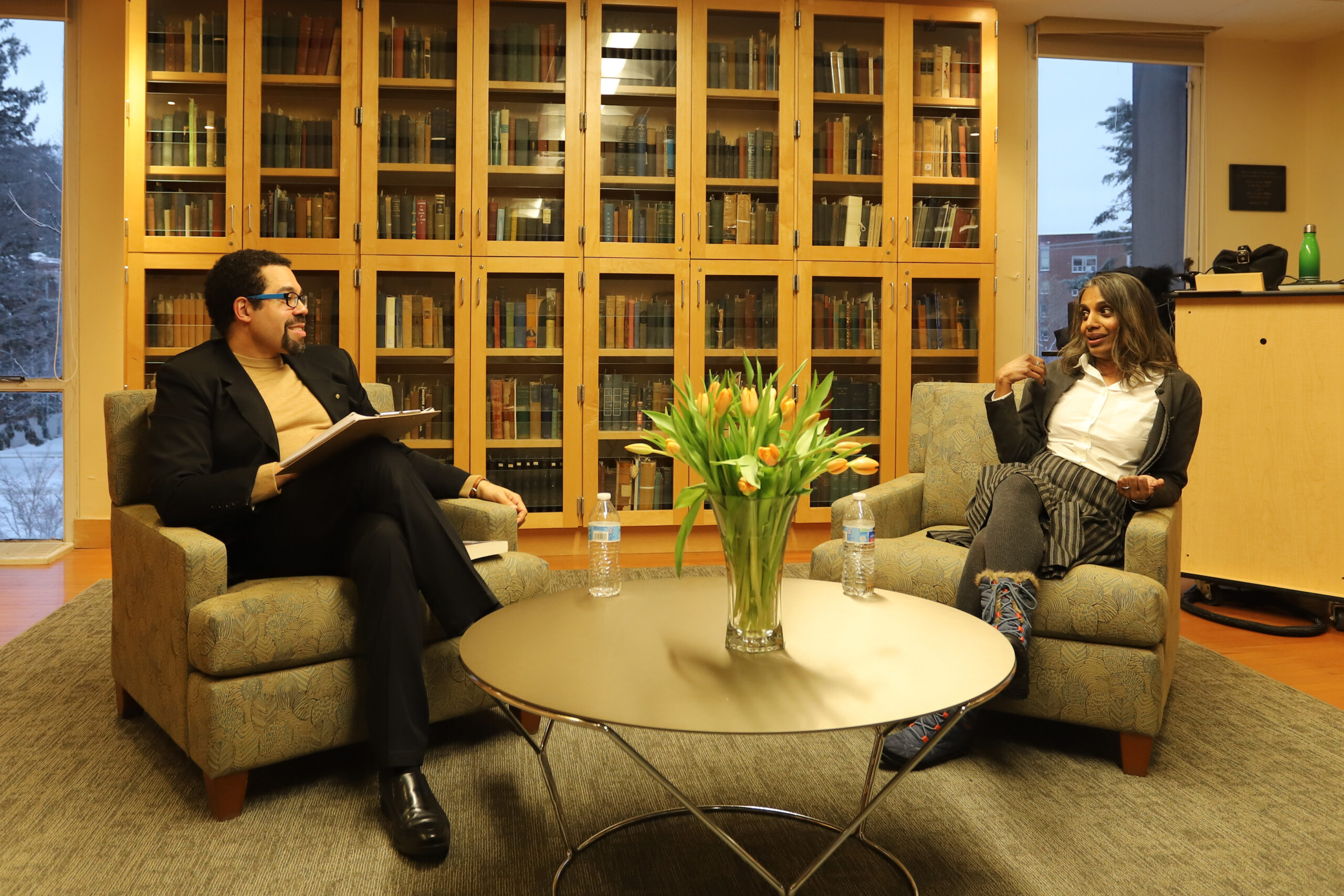Professor Chakkalakal launches new book honoring the life of writer Charles W. Chesnutt
February 14, 2025
 Kiran Elfenbein
Kiran Elfenbein“This is the story of an outsider who becomes an insider,” Associate Professor of Africana Studies and History and Chair of the Department of Africana Studies Brian Purnell said.
Purnell was one of many colleagues, friends and students at Associate Professor of Africana Studies and English Tess Chakkalakal’s book launch on Thursday evening in Hawthorne-Longfellow Library’s Nixon Lounge. The newly published biography, “A Matter of Complexion: The Life and Fictions of Charles W. Chesnutt,” paints a portrait of Chesnutt’s work to bridge the gap between Black and white writers in the publishing world of 1950s America.
The book recounts Chesnutt’s experience of being born to mixed-race parents. As a writer, lawyer, stenographer and political activist, Chesnutt worked to cross the racial barriers that divided Black and white writers with the diversity of the characters in his stories. Despite his dedication to writing, Chesnutt’s path to becoming a writer wasn’t linear. He had to take on jobs outside of writing to make money for himself and his family.
“He’s supporting himself and his family in business, while he’s also writing and trying to publish on the side. I found something quite admirable about the devotion to his craft and his need to work for a living,” Purnell said.
Chakkalakal pointed out how it wasn’t just Chesnutt’s dedication to pursue a life as a writer that distinguished him as a storyteller, elaborating on his unique writing and publishing decisions.
“To place him historically,… he was a postbellum, pre-Harlem writer.… He’s not really part of the Reconstruction era or the slavery era or the anti-slavery literature that we read,” Chakkalakal said.
The conversation then moved to focus on Chesnutt’s desire to challenge racial categories with his fiction during a time when publishing companies wanted to maintain the divide between white and Black individuals. Chesnutt used his writing as a chance to move back and forth between racial categories in his stories. Purnell emphasized that, despite the disapproval of many publishing companies, Chesnutt remained committed to moving away from the restrictive racial categories present within the literature of his time.
Chakkalakal further explained the difficulty of Chestnutt’s work given its historical context.
“Plessy v. Ferguson [happened in] 1896, [and] the color line between the whites and the colored was increasingly rigid. That’s the time in which [Chesnutt] was fighting,” Chakkalakal said. “So he wants to show up the problem, but given the categories that have been so firmly put in place, he actually kept only doing it through literature. Only through literature was he able to manifest the problem.”
In her book, Chakkalakal argues that literature became a backdoor through which Chesnutt started changing people’s views on race. The reality of American society at the time made it difficult for this change to happen otherwise, and this was his way of activism.
In the second half of the book launch, Chakkalakal described the process of writing and publishing. She detailed the several months it took to compile information, organize the facts and tell the story in a riveting way. As she worked on the story, she realized she wanted to break away from the rigid structures of academic writing she originally intended the story to be published in.
“If you want to sell this book, and if you write like an academic, nobody’s going to buy it…. So, I had to retrain and relearn how to write. And it was scary because I had learned for 20 years what good writing is, where you’re making an argument, arguing it with critics, doing a paradigm shift or a critical intervention. But this is just a story,” Chakkalakal said.
Chakkalakal hopes her non-academic way of storytelling will appeal to the readers’ heartstrings, and, much like Chesnutt’s literature, pave the way for difficult themes of social hierarchy and racial divide to be addressed.

Comments
Before submitting a comment, please review our comment policy. Some key points from the policy: